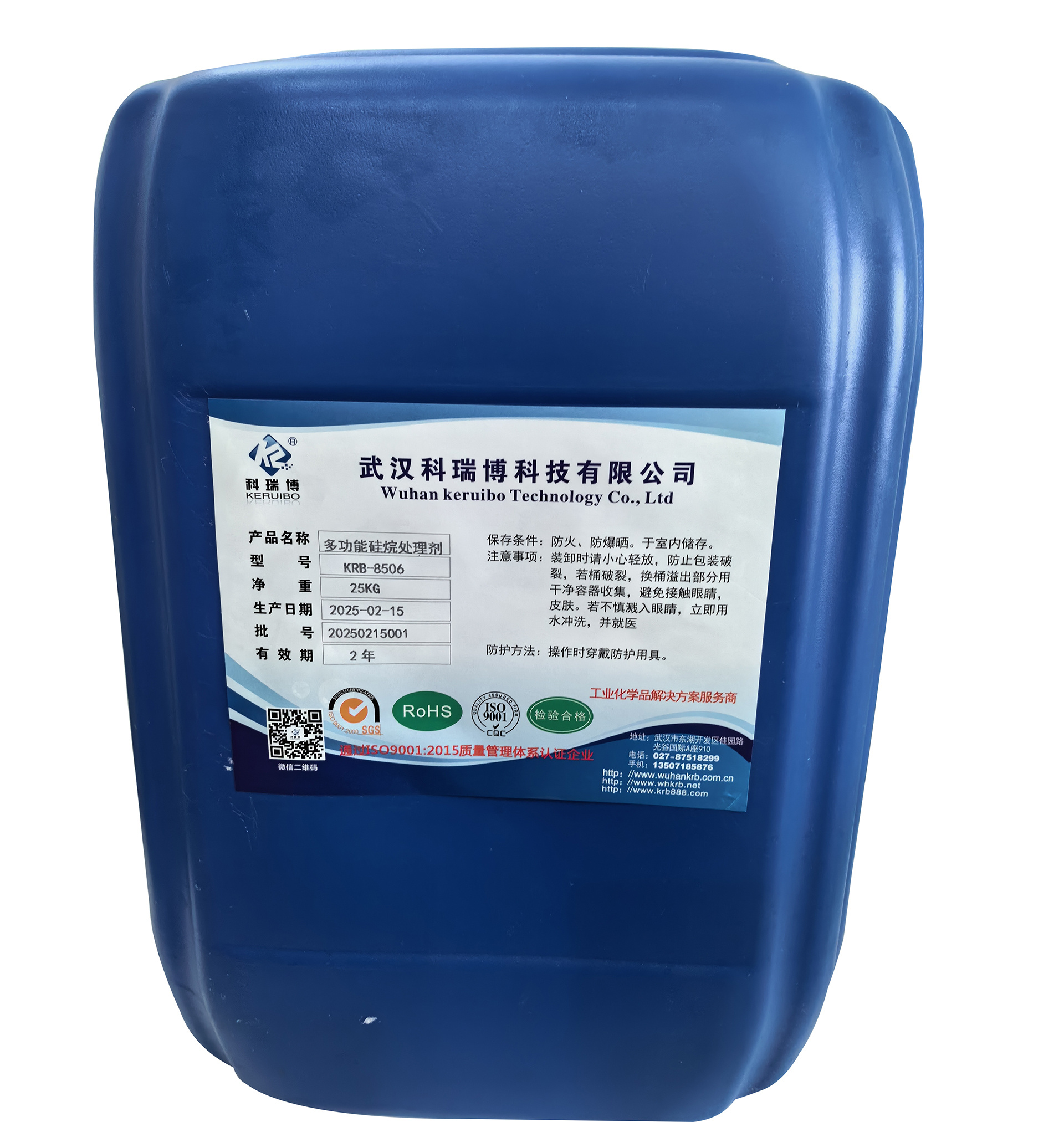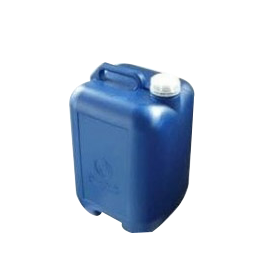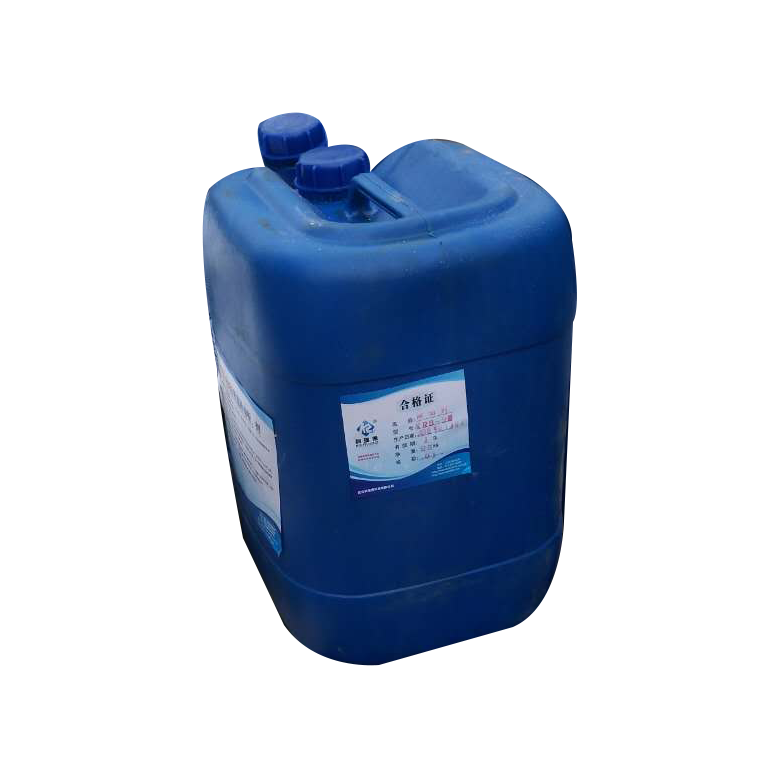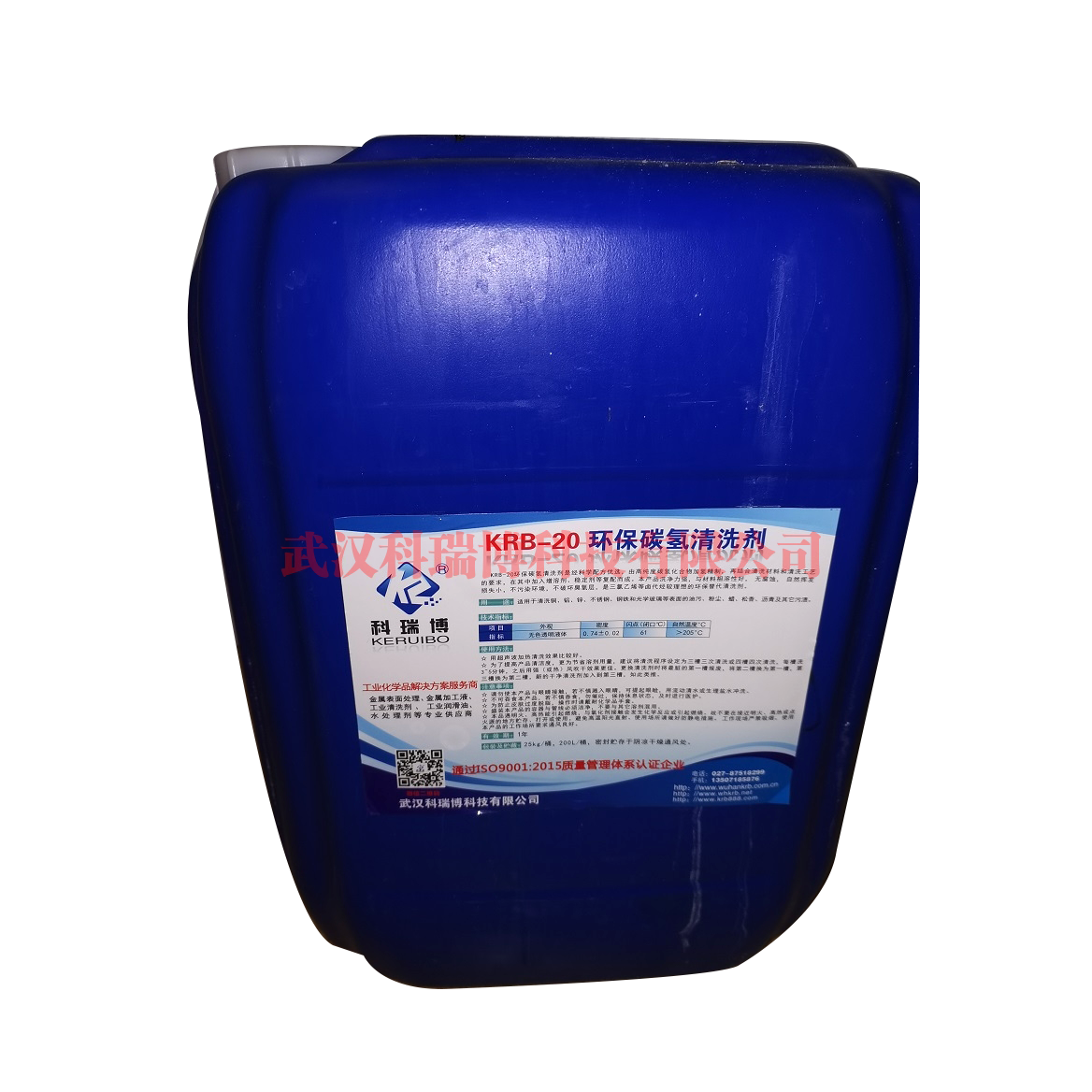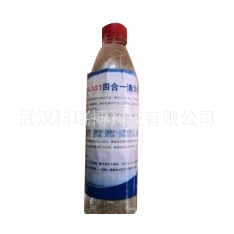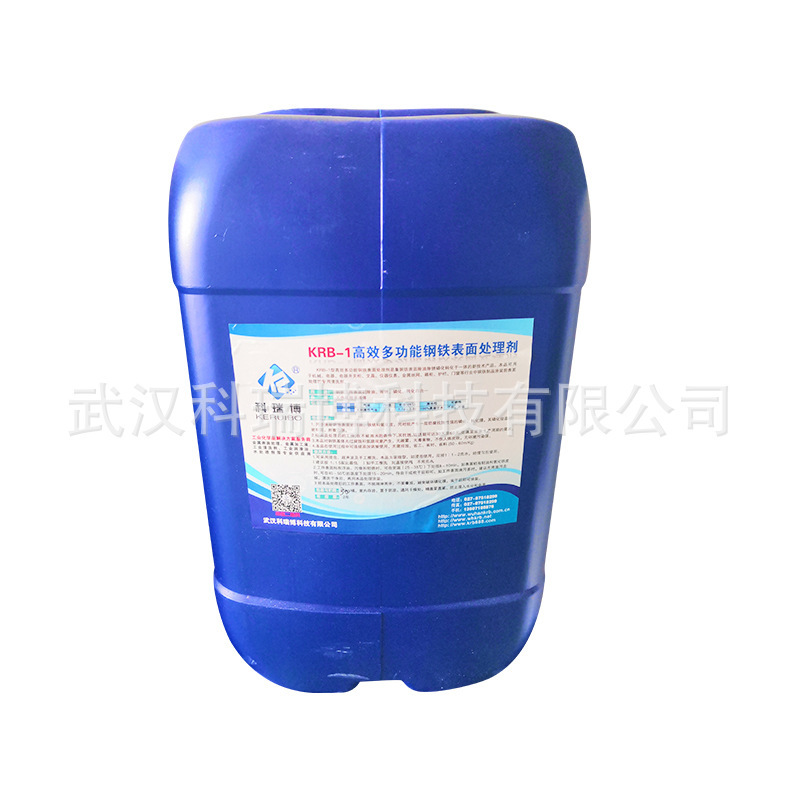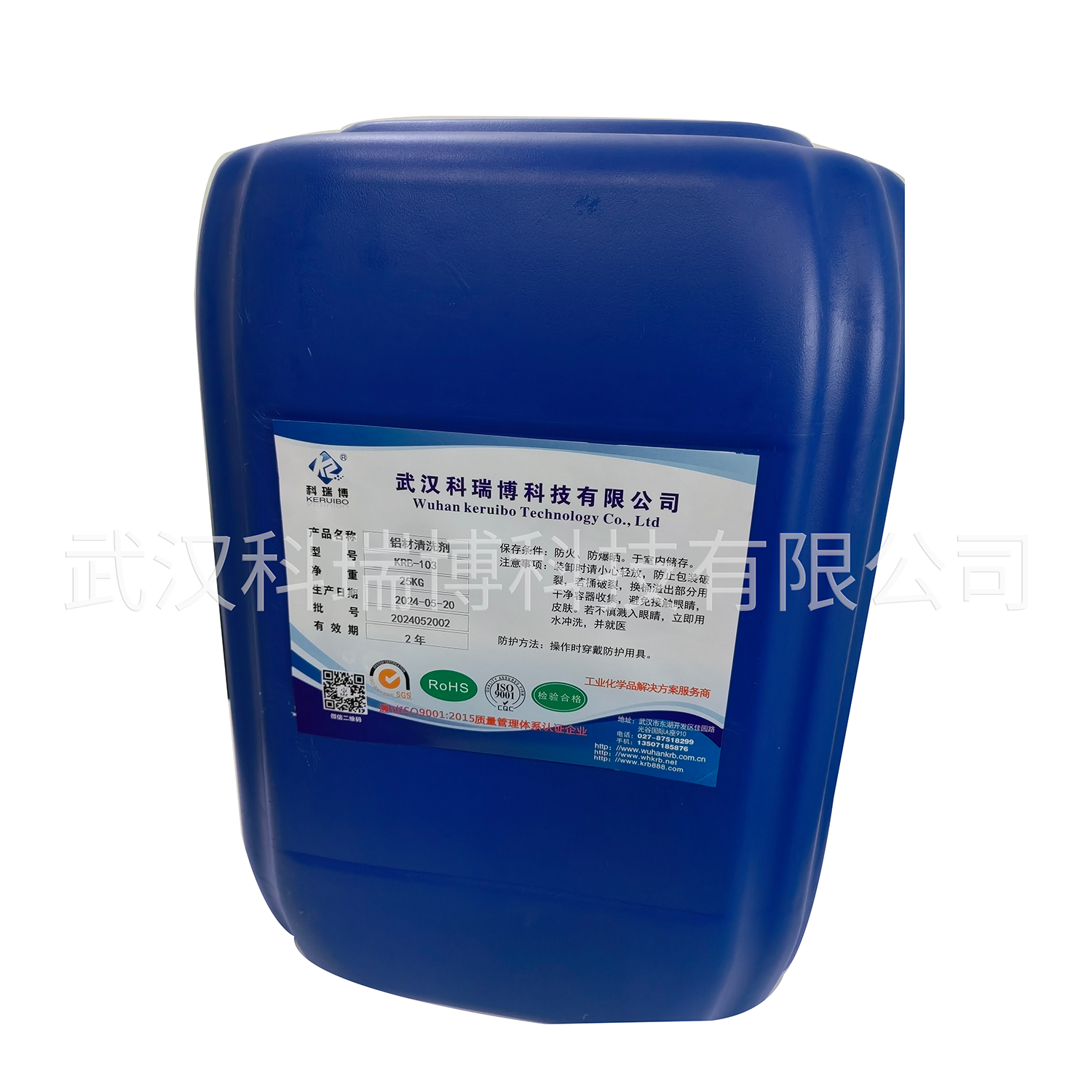KRB-L102 medium temperature phosphating solution
This process is suitable for the surface treatment of anti-rust steel products
hiddenValue
Details Introduction
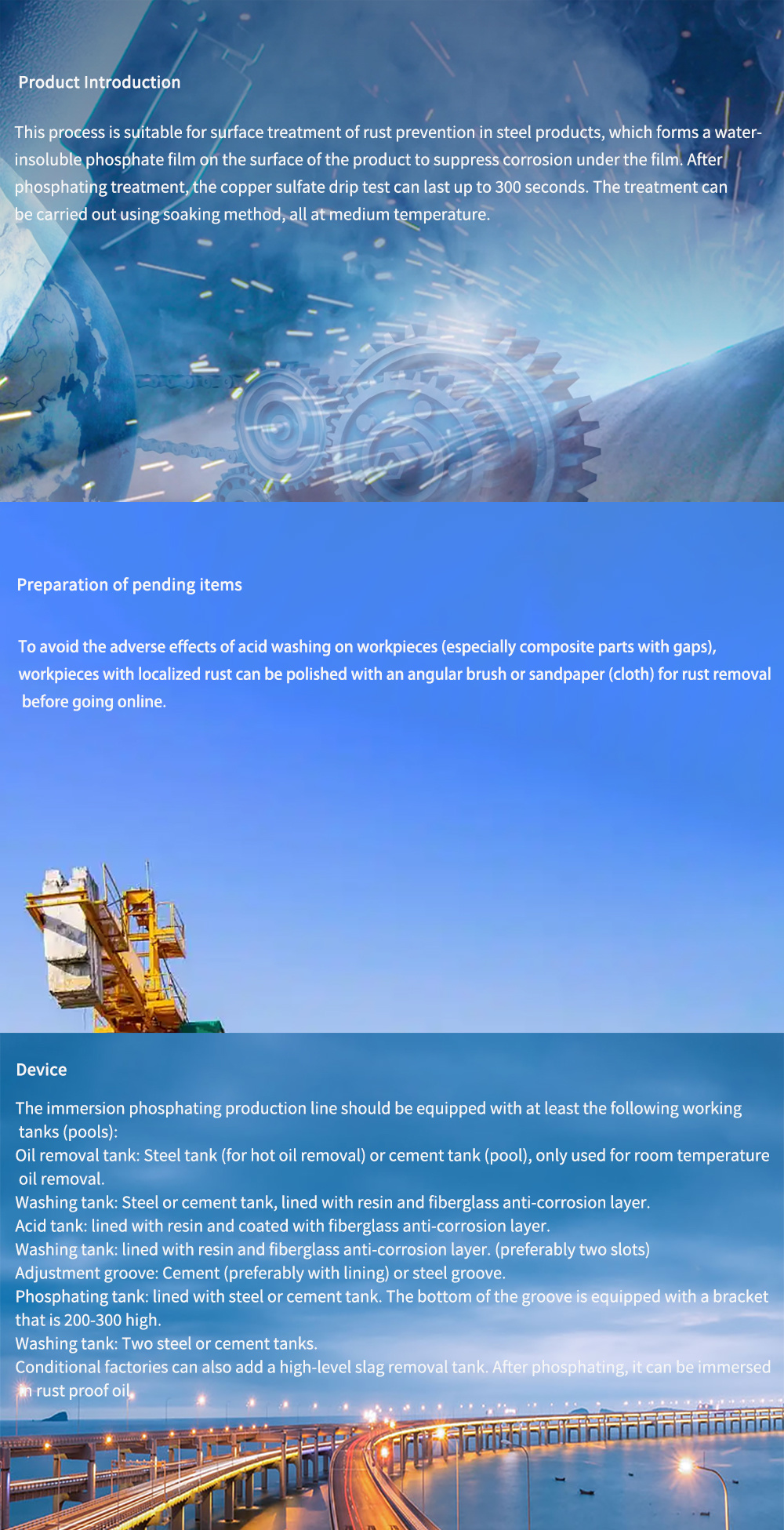
1.0 Scope of Application
This process is suitable for the surface treatment of anti-rust steel products, so that a layer of water-insoluble phosphate film is generated on the surface of the product to inhibit corrosion under the film. After phosphating treatment, the copper sulfate drop test can reach 300s. The treatment can be carried out by soaking method, all at medium temperature.
2.0 materials
KRB-L102 phosphating agent
3.0 reagent
0.1N sodium hydroxide standard solution
0.1N or 0.2N sulfuric acid standard solution
phenolphthalein indicator
Bromophenol blue indicator
4.0 equipment
The immersion type phosphating production line shall be equipped with the following working tank (pool) at least:
Oil removal tank: steel tank (for hot oil removal) or cement tank (pool), only used for oil removal at room temperature.
Washing tank: steel or cement tank, lined with resin, glass fiber anti-corrosion layer.
Acid tank: lined with resin, glass fiber reinforced plastic anti-corrosion layer.
Washing tank: lined with resin, glass fiber reinforced plastic anticorrosive coating. (best two slots)
Table adjustment groove: cement (preferably lined) or steel groove.
Phosphating tank: steel tank or cement tank with lining. The bottom of the groove is provided with 200-300 high brackets.
Washing tank: steel or cement tank (two).
Conditional plant can also add a high slag tank. After phosphating, it can be soaked in antirust oil.
5.0 process
Degreasing-water washing-pickling, degreasing and derusting-water washing-water washing-surface conditioning-phosphating-water washing-hot water washing-blow drying or drying-soaking in anti-rust oil
Preparation of 5.1 Parts to be Processed
In order to avoid the adverse effects of pickling on the workpiece (especially the assembly with cracks), the local rusty workpiece can be polished with an angle brush or sandpaper (cloth) before it is put on the line.
5.2 cage or pendant
There must be a gap between the workpieces when installing the cage to avoid "sticking to death". For workpieces that are easy to carry water and gas, attention should be paid to the direction of installation and hanging to facilitate drainage and exhaust.
5.3 oil removal
The workpiece to be phosphated must be removed from the surface of grease and other hydrophobic substances. Make the surface of the workpiece hydrophilic (after washing the water film on the surface of the workpiece uniform, continuous distribution, no cracking phenomenon). Degreasing reference time 15 -- 20 minutes.
The degreasing liquid can be selected from KRB-2A degreasing agent and KRB-2B degreasing agent with 5% (weight ratio, the same below), 90% water is added to build a bath, and it can work at normal temperature (preferably not less than 15°C). For different workpieces and oil stains, our company will send engineers to help users select the most suitable oil removal materials and processes.
The workpiece soaked in oil removal should be lifted up and down several times during the oil removal process to facilitate oil removal and air bag removal.
Analyze the alkalinity of the degreasing fluid every 1-2 days, KRB-2A2B the alkalinity of the degreasing fluid should be controlled at 30-40 points, and the alkalinity can be increased by 1 point for each supplement of 2kg/m3 degreasing agent A.
The oil slick on the liquid surface shall be removed in time during the work. When there is a large amount of oil dirt, mud scale and rust, the solution can be left standing for more than 12 hours, the clearer solution in the middle layer shall be extracted by submersible pump for reuse, the upper oil slick and the lower mud shall be discarded, and degreasing agent A and agent B shall be supplemented.
5.4 water washing
It is best to clean twice in two tanks.
5.5 acid pickling, degreasing and rust removal (it can also be arranged before the oil removal tank. Use with caution when there is a gap in the assembly! Do not use zinc or galvanized parts).
Use 15-20% concentrated sulfuric acid (containing H2SO4 98%) and 10-15% hydrochloric acid (containing HCL 31%), plus 5% degreasing agent KRB-2B agent to form pickling solution, keep acidity 400-500 points, soak at room temperature until oil rust is removed (recommended for about 20 minutes), then wash twice, and adjust the surface in time.
5.6 Table Tune
Use 0.2% of the surface powder to build a bath. The surface powder (powder) should be dissolved first and then added to the working tank, preferably dissolved in warm water of about 40°C. The amount of soda ash can be added to improve the pH value.
The alkalinity of the surface adjustment solution is controlled at 1.4~3.6 points; PH8 ~ 9; Soak for 1~2 minutes, allow appropriate extension, or spray for 30 seconds.
Supplemental table dispensing 0.3~0.5kg/m3 per day to compensate for the natural activity of the work consumption and table dispensing decay.
Do not mix acid and phosphating solution into the surface adjustment tank, check the PH once per shift, and correct the PH value of the surface adjustment solution to 8-9 with neutralizer. When the surface adjustment liquid is seriously polluted or the tank liquid is completely clarified, it should be replaced.
5.7 phosphating
A. Build a bath:
Calculate the working volume m3 of the phosphating tank, first inject 3/4 pool of clear water, add KRB-L102 phosphating agent, and the addition amount is 15-20%; Detect the total acidity (60-80 points) and free acidity of phosphating solution, then carefully adjust the free acidity to about 6-8 points with neutralizer, and add water to the working liquid level.
B. Control indicators
Total acidity a
60-80 points. For densely loaded workpieces, the value of a can be as high as 100 points or even higher.
free acidity B
6-8 points. Under the normal operation of supplementing phosphating agent in a small amount (not more than 8kg/m3 each time), the B value of phosphating solution can automatically establish balance, and generally no acid-base correction is required.
Working temperature T :70-80 ℃ phosphating time: 10-15 minutes or so
C. Maintenance and adjustment of solution
The values of a, B and c of phosphating solution shall be analyzed 1~2 times for each shift and corrected.
3kg/m3 per additional phosphating agent can increase the total acidity of phosphating solution by 1 point.
In the phosphating process, iron Fe2 entering the solution from the surface of the workpiece will be oxidized to Fe3 and converted into FePO4 white precipitate, [improper addition of alkali will also change Zn2 in the phosphating solution into Zn3(PO4)2 precipitate]. When there are more precipitates, they should be removed (slag tapping). If there are conditions, it is better to use continuous filtration to slag tapping, followed by high-level pool slag tapping. Slagging with shovels and buckets should bring out as little solution as possible.
D. The phosphating process should pay attention to shaking the workpiece to eliminate the air bag.
For densely loaded workpieces or elongated tubular members, the workpieces shall be raised to the liquid surface and then immersed in the solution several times to renew the solution contacting the workpieces. Phosphating time is generally 12-15 minutes of immersion dense loading parts should be appropriate to extend the phosphating time.
After phosphating is completed, the solution brought by the workpiece should be fully poured (leached).
5.8 hot water 1-2.
5.9 drying or blow drying
5.10 Inspection
The appearance of the phosphating film shall be dark gray or black.
5.11 cleaning of workpiece surface
Clean the dust particles on the surface of the workpiece with a brush and compressed air. Place in an air-dry location and soak in rust-proof oil in time.
Analysis and detection methods of 6.0 solution
Alkalinity of 6.1 degreasing fluid
Absorb 5.00ml of oil removal solution with a graduated pipette, inject it into a conical flask, add 50 ml of pure water and 2 drops of phenolphthalein indicator, and titrate with 0.2N H2SO4 standard solution until red disappears as the end point. Note the number of milliliters V of standard solution consumed for titration. Alkalinity = 0.4V (point).
Alkalinity of 6.2 surface conditioning solution
Take 50 ml of meter-adjusted solution, place it in a conical flask, add 4 drops of bromophenol blue indicator, and titrate with 0.2N H2SO4 standard solution until light yellow is the end point. Note the number of milliliters V of standard solution consumed for titration. Alkalinity = 0.4V (point).
6.3 phosphating solution
Total acidity a: suck 5.00ml of phosphating solution with a graduated pipette, inject it into a conical flask, add 50 ml of water and 2 drops of phenolphthalein indicator, titrate with 0.1N NaOH standard solution to a stable light red as the end point, and record the milliliter v of standard solution consumed by titration. Total acidity = 2V (point).
Free acidity B: suck 10.00ml of phosphating solution with a graduated pipette, inject it into a conical flask, add 50ml of water and 4 drops of bromophenol blue indicator, and titrate with 0.1N NaOH standard solution until blue is slightly greenish (observed under fluorescent lamp) or blue is purplish red (detected under iodine tungsten lamp) as the end point. Note the number of milliliters V of standard solution consumed for titration. Free acidity = V (point).
Key words:
Industrial cleaning agent
Product inquiry
Note: Please leave your phone number or E-mail and our professionals will contact you as soon as possible!
Related Products



